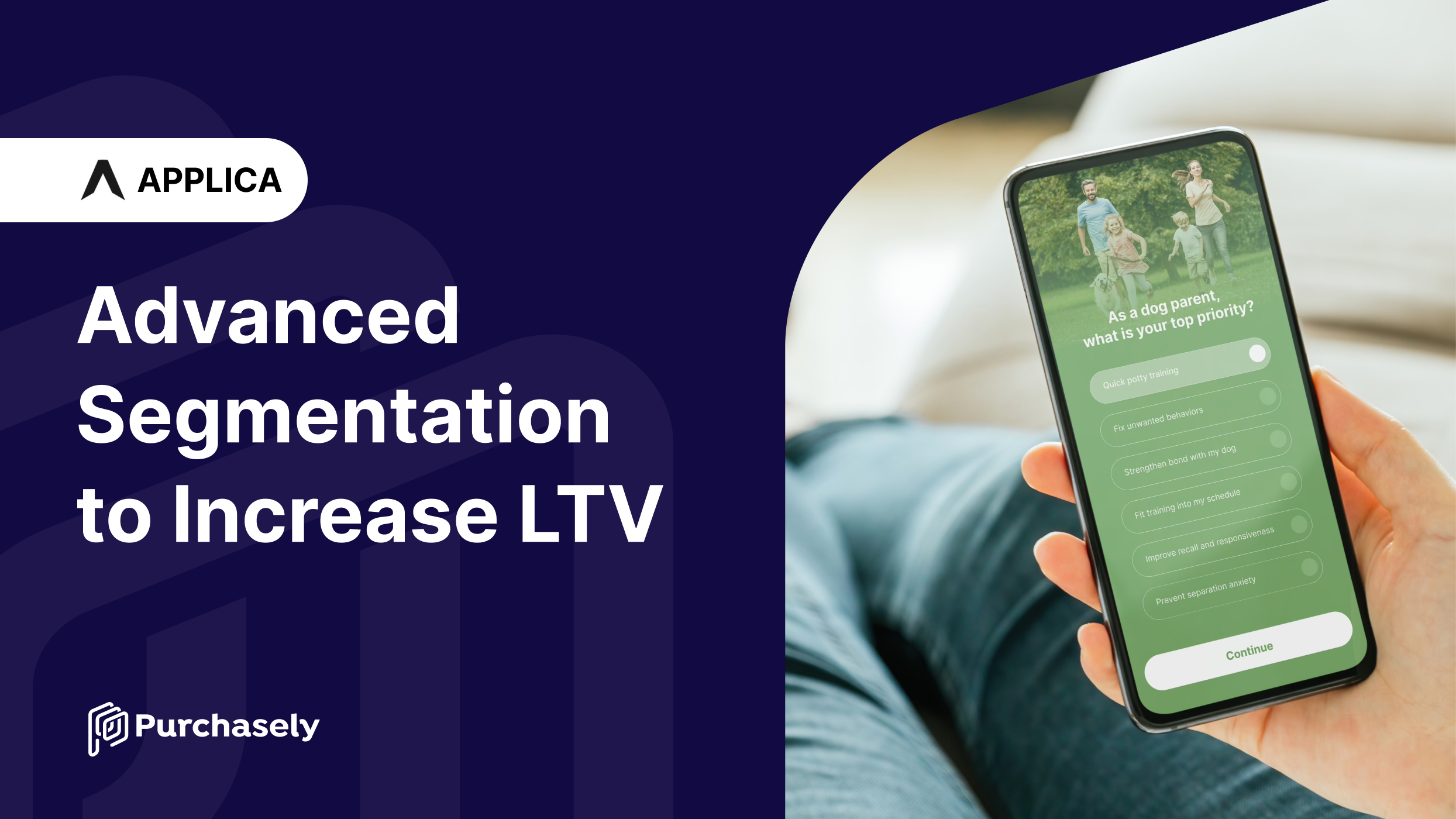Advanced Segmentation to Increase LTV
13 March 2025
Customers Case Study Paywall A/B Testing Conversion Price Testing Mobile APPBoost LTV with advanced segmentation. See how top apps tailor pricing & messaging to drive conversions.
Get our latest resource
Paywall Copywriting Guidebook
Discover what makes converting copy: 5 pillars of paywall copywriting that works every time, winning frameworks, and real-life examples.
Get our latest resource
Lifecycle Paywall Engagement
This ebook provides lifecycle paywall engagement tips, applicable paywall examples, and benchmarks for each stage of the funnel.

The mobile app subscription industry is more competitive than ever, with businesses continuously searching for ways to optimise pricing, paywalls, and value propositions.
By studying leading consumer apps in the education and health and wellness space and leveraging empirical evidence from Applica’s work in app growth, we uncover some lessons learned from implementing certain research methods and testing methodologies that should provide you with some inspiration and actionable insights that you can apply to the problems you’re facing with your own app, from refining your monetisation strategies to driving sustainable growth.
Product experiments that go beyond basic A/B testing
User segmentation strategies that drive higher LTV
How MaxDiff analysis informed Dogo’s paywall testing strategy
Successful subscription apps don’t rely on guesswork - they use rigorous testing methodologies to make data-driven decisions. While A/B testing is a common approach, it often falls short when assessing multiple value propositions or pricing tiers at once. Instead, consider integrating advanced experimental designs, such as multivariate and sequential testing, to gain deeper insights into user preferences while maintaining statistical reliability.
Take Duolingo, for example, they are renowned for their disciplined approach to experimentation. In one case study, they explain how they improve their product "one experiment at a time” and “test everything” is one of their operating principles. Essentially, they always design controlled experiments to test small, incremental changes - from button copy and free trial lengths to lesson difficulty and UI adjustments - ensuring that every experiment is measured against set reporting templates. This method not only helps them determine which variations drive better results but also minimises risk by isolating variables and confirming statistical significance. The continuous cycle of hypothesis, testing, and iteration is certainly one we advocate for.
Their multiscreen paywall below is something we first noticed on Duolingo and now it’s become much more common place, to arrive at these 5 screen below they would have carried out a number of tests before creating this final version.
Not all users respond the same way to pricing and features, which is why segmentation plays a crucial role in subscription optimisation. By leveraging cohort analysis, survey-based research, and behavioural segmentation, you can tailor your monetisation strategies to different user groups.
For example, Ahead, a leading mental health app, segments its audience based which improvements a user chooses during onboarding and then displays a tailored paywall headline based on this info. This is a nice personalised touch as you’re targeting users with messaging that is more likely to resonate with them at a key moment. To add a level of sophistication, once you understand your key segments (that convert well), you can then start to play around with different messaging, pricing and offers to help increase lifetime value (LTV) and reduce churn.
If you’re thinking about how to approach user segmentation, it usually involves several key steps:
Collecting and analysing data: Use analytics tools to gather data on user behaviour, such as session length, frequency, and feature usage. This data helps identify distinct user groups.
Defining segments clearly: Create user personas based on this data. For example, differentiate between users who are casual explorers and those who are more committed, as each group may require different messaging and pricing strategies.
Tailoring offers: Develop targeted marketing and pricing strategies for each segment. For new users, consider offering free trials or discounts, while loyal or power users might benefit from premium bundles or exclusive content.
Iterative testing: Just like with testing methodologies, user segmentation is an iterative process. Regularly revisit your segments, refine your personas, and adjust your offers based on ongoing data analysis and user feedback.
A/B testing tells you which paywall performs better but it doesn’t tell you why
That’s where MaxDiff analysis comes in handy. It’s a research method that helps to identify which features users value most, so you can prioritise the most impactful elements in your pricing and messaging.
Applica, in partnership with Dogo, a leading dog training app, integrated a MaxDiff study to inform their paywall experiments which meant that the copy and features highlighted on the paywall were tailored to their key audience segments.

✅ More effective A/B tests that focused on high-impact features
✅ A paywall design optimised for conversion
✅ A 19% uplift in ARPU
By using MaxDiff analysis alongside A/B testing, Applica streamlined their experimentation process for Dogo and drove revenue growth by focusing on what users valued the most.
It's easy to say "test, segment, and iterate" but how do you actually apply these methods in a way that drives measurable growth? Here’s a structured approach to putting these insights into action.
Once you move past the basics and have a decent number of tests under your belt, you can then start to think about how to run multiple tests at once.
💡 Pro tip: you can do this by utilising different geos and platforms, as the iOS audience behave differently to Android. You don’t necessarily need to jump straight to A/B/C or multi-variate (but you can if you have the resource).
Understand how behaviour and perceived value differs between your key segments and test what works and what doesn’t work. For example:
Applica is a growth partner for mobile and web apps, focused on delivering results through experimentation, organic growth, and paid promotion. Our clients value our behavioural-driven approach, fast-paced optimisations, and deep expertise. See the Dogo UX design case study on Behance.
Dogo is a comprehensive dog training app designed to make training fun, effective, and accessible for dog owners and their furry friends. With a wide range of interactive features, Dogo provides step-by-step guided lessons, personalised training plans, and daily challenges to support dogs of all ages and breeds. Developed in collaboration with professional trainers and veterinarians, the app caters to diverse behavioural goals, from basic commands to addressing problem behaviours.
With a mission to strengthen the bond between pets and their owners, Dogo empowers dog lovers to nurture well-behaved and happy companions right from the comfort of home.
13 March 2025
Customers Case Study Paywall A/B Testing Conversion Price Testing Mobile APPBoost LTV with advanced segmentation. See how top apps tailor pricing & messaging to drive conversions.
Jason Gossett
24 September 2024
Customers Case Study Dating EventJoin Purchasely’s CEO, Jeff Grang, at Global Dating Insights and Social Discovery Insights in London.

Vanina Nguimbi
Marketing @ Purchasely
21 December 2022
Customers Purchasely Platform Paywall DesignGet inspired by native paywalls powered by Purchasely. Learn how to make them yours with our Paywall Builder and see its customization capacities.

Jeff Grang
Co-founder & CEO @ Purchasely